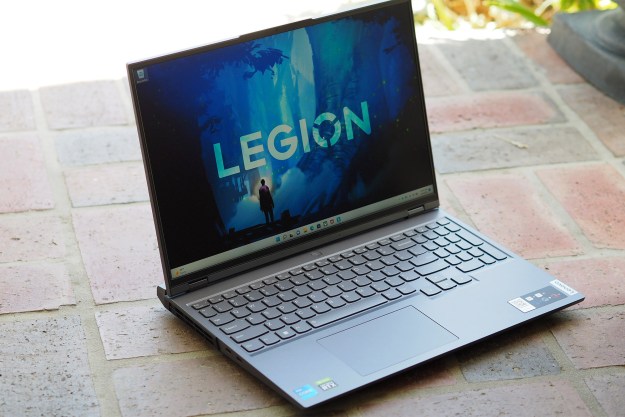Gamers holding off on purchasing a gaming laptop featuring Nvidia’s RTX 3080 or RTX 3070 mobile GPUs for a more affordable option are now in luck. Starting this week, Nvidia announced that gaming notebooks featuring entry-level GeForce RTX 3060 mobile GPU will start to ship. Nvidia had debuted all three mobile 3000-series cards earlier this year at CES, noting that the laptop variants run the same Ampere architecture found on the company’s desktop graphics cards.
Laptops powered the RTX 3060 graphics cards feature 3,840 CUDA cores along with 6GB of GDDR6 memory and a 192-bit wide memory bus. A major change this year is that Nvidia isn’t requiring laptop manufacturers to explicitly state whether gaming notebooks use a Max-Q or Max-P design, which will likely lead to confusion on the market as gamers try to decipher which design variant their particular laptop model will be using.
Nvidia lists that RTX 3060 mobile card as supporting either 60W to 115W of power and have clock speeds ranging from 1283MHz to 1703MHz.
Buyer beware of differing configurations

An early review comparing two different configurations of the XMG Apex 17 laptop was posted on Hardware Unboxed and TechSpot, offering us an insight into how performance is affected by power and thermals.
The first model pairs Nvidia’s GPU with AMD’s processor, and the review notes that the RTX 3060 is clocked with a boost speed of 1,702MHz and supports Dynamic Boost and Resizable Bar but not Whisper Mode or Advanced Optimus. According to Videocardz, this is likely the top RTX 3060 mobile configuration that is offered with 115W of total graphics power, or TGP.
A second XMG Apex 17 review laptop paired Intel’s processor with Nvidia’s RTX 3060. The GPU here is clocked at a slower 1,425MHz boost speed and has a TGP of 80W. This configuration does not support the Resizable Bar, unlike the AMD model, but it does come with Whisper Mode. Both models are equipped with Dynamic Boost, according to TechSpot’s written review.
The review noted that the RTX 3060 with an 80W TGP was about 19% faster than the RTX 2060, which has a slightly higher TGP of 90W, when comparing gaming frame rates across different titles, including Gears 5, Shadow of the Tomb Raider, Metro Exodus, The Division 2, Resident Evil 2, Borderlands 3, and more. The RTX 3060 with 115W TGP is 22% faster when compared to the prior generation RTX 2060, according to the same review metrics.
The notable difference in performance could also be attributable to the chassis size. Though both XMG variants are similar, TechSpot noted that the AMD Ryzen 5000-powered variant comes with a slightly bigger chassis, which offers better cooling. This in turn also allows the GPU to run at a higher power rating for better performance.
Discerning gamers keen to squeeze the most performance out of their mobile rigs will want to read reviews to ensure they’re getting the mobile GPU configuration they want, especially now that Max-Q and Max-P labels are no longer in use.

In addition to the XMG Apex 17 laptops, Nvidia’s shopping portal lists several additional RTX 3060-powered notebooks that start at $999. These mobile rigs include the MSI GF65, MSI Stealth 15M, and MSI GS66. In the coming months, additional models from more manufacturers will be hitting the market soon. During the company’s CES presentation, Nvidia executives promised 70 different notebook designs featuring the full range of 3000-series GPUs.
Nvidia’s wallet-friendly RTX 3060 desktop graphics card will be available later this month. On the desktop, the RTX 3060 joins Nvidia’s RTX 3090, RTX 3080, RTX 3070, and RTX 3060 Ti cards.
Editors' Recommendations
- Don’t buy the RTX 3060 in 2024
- You shouldn’t buy these Nvidia GPUs right now
- Using an RTX 3060? Here’s the GPU to upgrade to next
- Nvidia’s RTX Video can upscale blurry YouTube videos
- Should you buy the RTX 4080 now or wait for the RTX 4080 Super?



